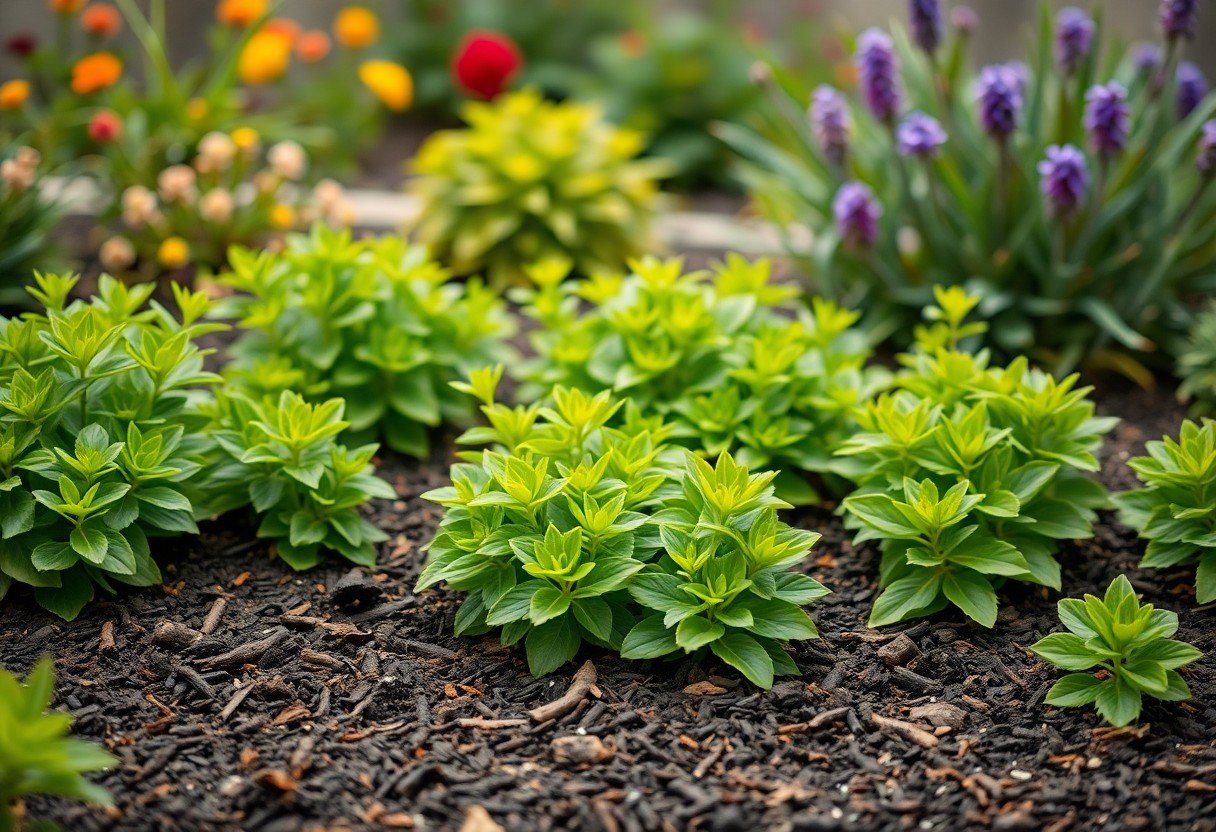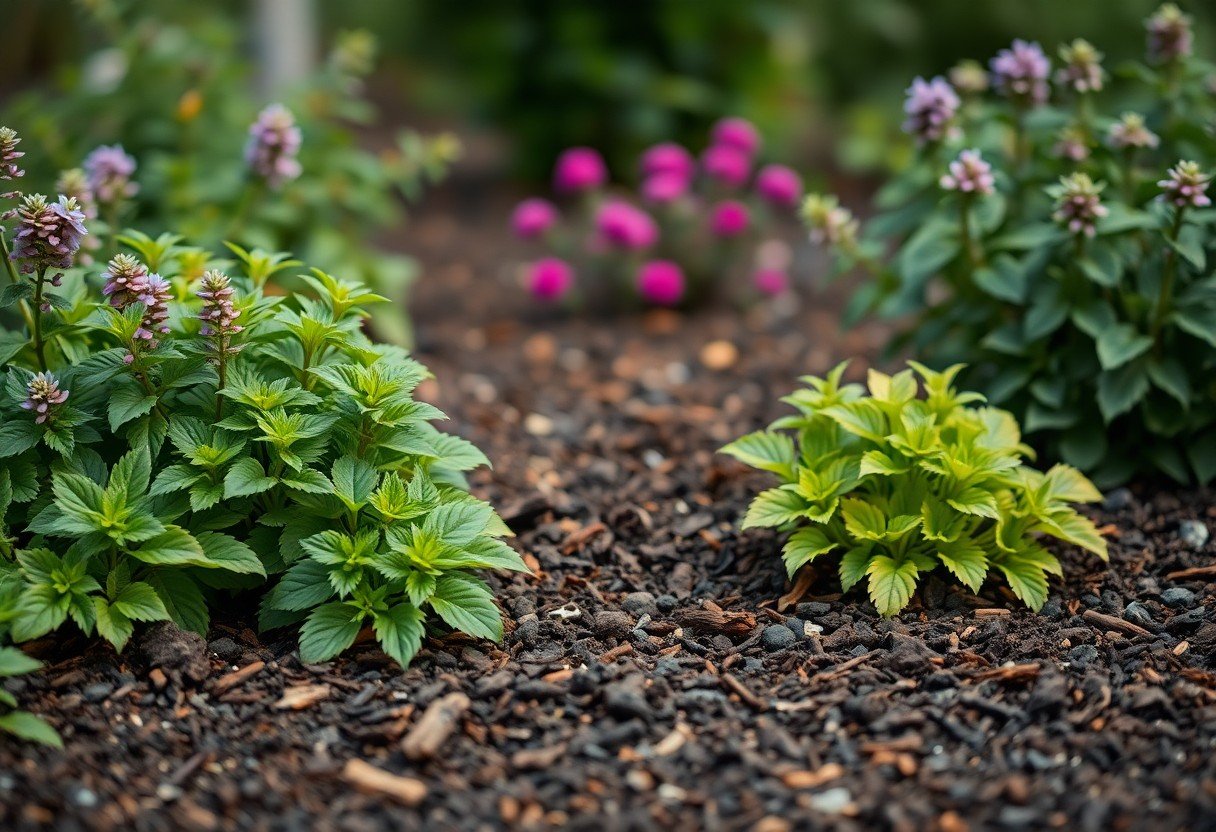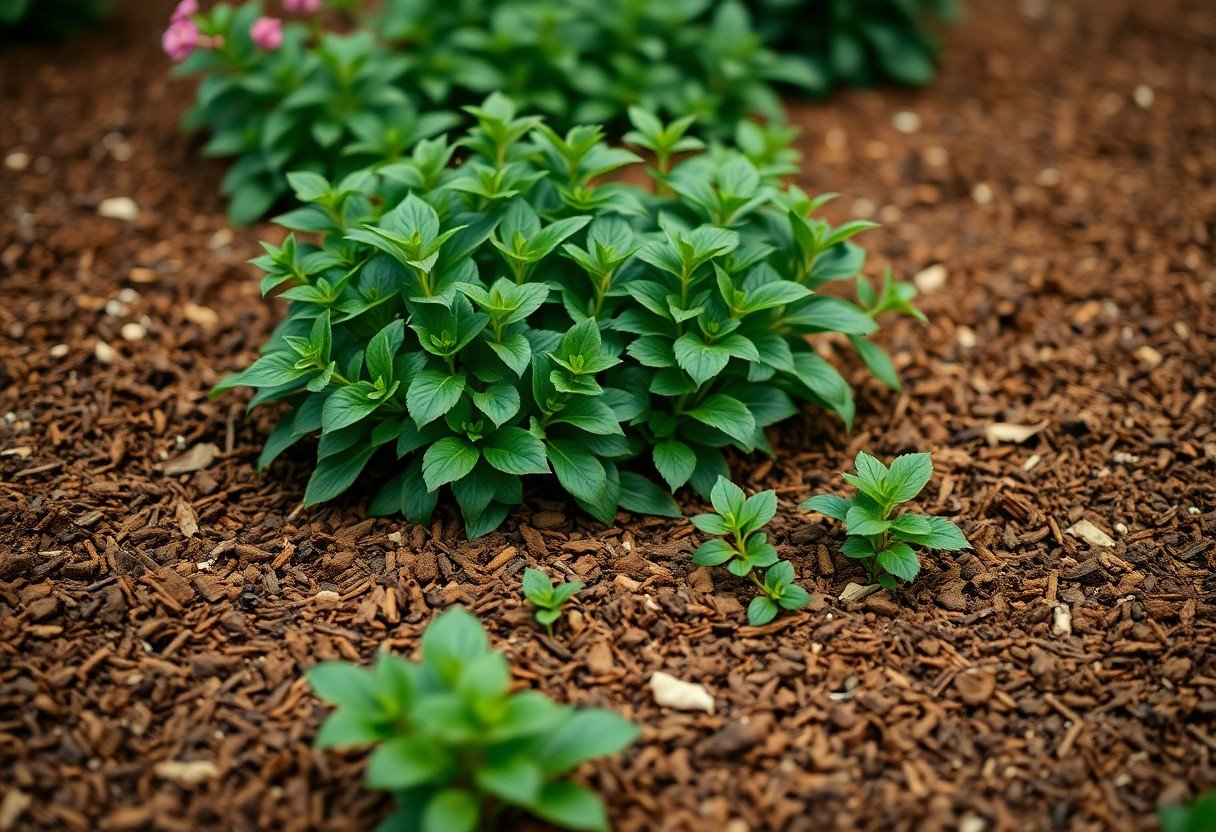To boost your perennials’ health and appearance, you will learn how to apply mulch effectively. You can retain moisture, suppress weeds, and regulate soil temperature by applying mulch around your perennials. As you prepare your garden for the new season, you will discover the best methods for mulching, ensuring your plants receive the necessary care to thrive. By following these steps, you will be able to create an ideal environment for optimal growth and enjoy a vibrant, thriving garden.
Preparing for Mulching
While getting ready to mulch around your perennials, you’ll want to clear the area of any debris, weeds, or dead plant material to ensure your flowers have the best chance to thrive. This step will help you achieve optimal growth and a healthy garden.
Understanding the Benefits of Mulch for Perennials
One of the main advantages of using mulch is that it helps retain moisture in the soil, reducing the need for frequent watering and minimizing erosion. As you prepare to mulch, consider how this will impact your perennial care routine, making it easier for you to maintain your garden.
Choosing the Right Type of Mulch for Optimal Growth
Much like selecting the perfect plant for your garden, choosing the right type of mulch is vital for your perennials’ well-being. You’ll need to consider factors such as climate, soil type, and the specific needs of your plants when deciding on the best mulch for your garden.
Type of mulch can significantly impact the health and growth of your perennials. As you weigh your options, consider the characteristics of different mulch types, such as organic or inorganic, and how they will interact with your soil and plants. You can then select the mulch that best suits your garden’s unique conditions, setting your perennials up for a successful growing season.
Selecting the Right Mulching Technique
Now that you’re ready to mulch, consider visiting Using Mulch in Your Flower Garden (Simple Tips & Tricks) for inspiration.
Considering Climate and Soil Factors
Some factors to keep in mind when selecting a mulching technique include:
- Climate conditions
- Soil type
After considering these factors, you can choose the best approach for your perennials.
Assessing Perennial Species for Specific Needs
Perennial plants have unique needs, and you should assess these needs when choosing a mulching technique.
Species like hostas and daylilies have different requirements, and you should research the specific needs of your perennials to ensure you’re providing the best conditions for growth and development, allowing you to make informed decisions about mulching techniques that will enhance your garden’s overall health and appearance.
Applying Mulch Effectively
It is vital to apply mulch around your perennials to promote healthy growth and development.
Tips for Even Coverage and Depth
For optimal results, you should apply a layer of mulch that is evenly distributed and not too deep.
- Aim for a depth of 2-3 inches
Knowing this will help you achieve the best results for your perennials.
Strategies for Water Retention and Weed Suppression
For efficient mulching, you need to consider strategies that help retain water and suppress weeds.
Suppression of weeds is key to promoting your perennials’ growth, and you can achieve this by applying a thick enough layer of mulch to prevent weeds from growing, while also ensuring your perennials receive adequate water and nutrients, allowing you to enjoy a lush and healthy garden throughout the season.
Maintaining Mulched Areas
All mulched areas require regular maintenance to ensure optimal growth of your perennials. You should check your mulched areas regularly to ensure they are performing as expected.
How-to Guide for Regular Inspections and Replenishment
Along with your regular gardening routine, you should inspect your mulched areas to identify any issues. You can then replenish the mulch as needed to maintain its effectiveness.
Factors Influencing Mulch Degradation and Replacement
Lacking proper maintenance, your mulch can degrade quickly. Consider the following factors:
- Weather conditions
- Moisture levels
, Perceiving these factors will help you determine when to replace your mulch.
A key aspect of maintaining your mulched areas is understanding the factors that influence mulch degradation and replacement. You should consider factors such as:
- Soil type
- Pest activity
, Perceiving how these factors impact your mulch will enable you to make informed decisions about its maintenance and replacement, ensuring your perennials continue to thrive.
Common Mistakes to Avoid
Your mulching efforts can be hindered by simple mistakes, so it’s important to understand the basics, which you can learn more about at Mulching Basics, to ensure optimal growth for your perennials.
Overmulching and Its Consequences
Consequently, applying too much mulch can lead to poor air circulation, waterlogged soil, and root rot, ultimately harming your plants, so be mindful of the mulch depth.
Incorrect Mulch Placement and Timing
Clearly, placing mulch too close to plant stems or applying it at the wrong time can cause damage, so it’s important to follow best practices when mulching around your perennials.
A key consideration is the timing of mulch application, as you should aim to mulch when the soil has warmed up and dried out slightly, usually in late spring or early summer, to prevent retaining moisture and suppressing plant growth, allowing you to create an ideal environment for your perennials to thrive.
Advanced Mulching Techniques
Once again, you can take your mulching to the next level by:
- Using a variety of materials
Visit Wisconsin Gardening Guide: How to Mulch in Fall, Winter and Spring for more information.
| Technique | Benefits |
|---|
Layering Mulch for Enhanced Benefits
There’s an art to layering mulch, and you can achieve this by applying a thin layer of mulch around your perennials.
Incorporating Compost for Improved Soil Health
With the right combination of mulch and compost, you can create a thriving ecosystem for your perennials.
Health of your soil is directly related to the health of your perennials, and incorporating compost can significantly improve soil structure and fertility, allowing you to grow stronger and more resilient plants, you can also use it to adjust your soil’s pH levels, and increase the water retention capacity of your soil, letting you water your plants less frequently.
Conclusion
So, by following these steps, you can effectively apply mulch around your perennials for optimal growth this season. You will be able to retain moisture, suppress weeds, and regulate soil temperature, creating a healthy environment for your plants to thrive. Your perennials will flourish with proper mulching, and you will enjoy a vibrant and beautiful garden throughout the season.



